Charles M. Kozierok The TCP-IP Guide
Подождите немного. Документ загружается.

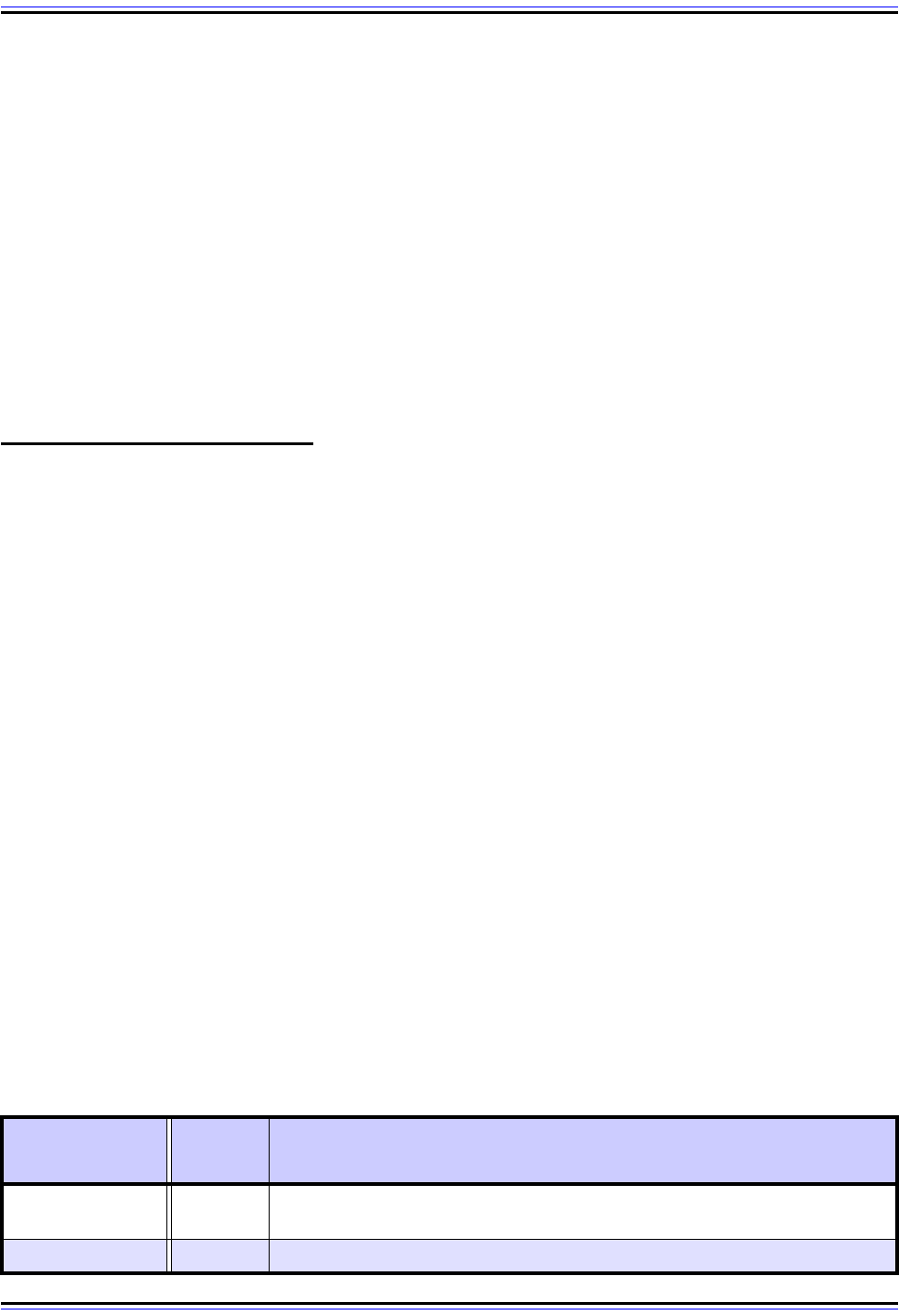
The TCP/IP Guide - Version 3.0 (Contents) ` 671 _ © 2001-2005 Charles M. Kozierok. All Rights Reserved.
Addressing of Neighbor Advertisement and Neighbor Solicitation Messages
Neighbor Solicitation messages are sent either unicast to the address of the target device,
or to the solicited-node multicast address of the target. This latter address is a special type
used to allow a device to send a multicast that will be heard by the target whose address it
is trying to resolve, but won't be heard by most other devices; it is explained in the topic on
IPv6 address resolution.
When a Neighbor Advertisement message is generated in response to a Neighbor Solici-
tation, it is sent unicast back to the device that sent the Solicitation, unless that message
was sent from the unspecified address, in which case it is multicast to the “all nodes”
multicast address. If the Neighbor Advertisement message is sent unsolicited (for example,
by a device that wishes to inform others of a change in link-layer address), it is sent to the
“all nodes” multicast address.
ICMPv6 Redirect Messages
Because of the different roles of routers and hosts in an IPv6 internetwork, hosts don't need
to know very much about routes. They send datagrams intended for destinations on the
local network directly, while those for other networks they dump to their local routers and let
them “do the driving”, so to speak.
If a local network has only a single router, then it will send all such non-local traffic to that
router. If it has more than one local router, the host then must decide which router to use for
which traffic. In general terms, a host will not know the most efficient choice of router for
every type of datagram it may need to send. In fact, many nodes start out with a limited
routing table that says to send everything to a single default router, even if there are
several routers on the network.
When a router receives datagrams destined for certain networks, it may realize that it would
be more efficient if such traffic was sent by a host to a different router on the local network.
If so, it will invoke the Redirect function by sending an ICMPv6 Redirect message to the
device that sent the original datagram. This is the last of the functions that in IPv6 are
performed by the Neighbor Discovery protocol, and is explained in a topic on the Redirect
function in that section. Redirect messages are always sent unicast to the address of the
device that originally sent the datagram that led to the Redirect being created.
ICMPv6 Redirect Message Format
The format of ICMPv6 Redirect messages is shown in Table 114 and Figure 162.
Table 114: ICMPv6 Redirect Message Format (Page 1 of 2)
Field Name
Size
(bytes)
Description
Type 1
Type: Identifies the ICMPv6 message type; for Redirect messages the
value is 137.
Code 1 Code: Not used; set to 0.
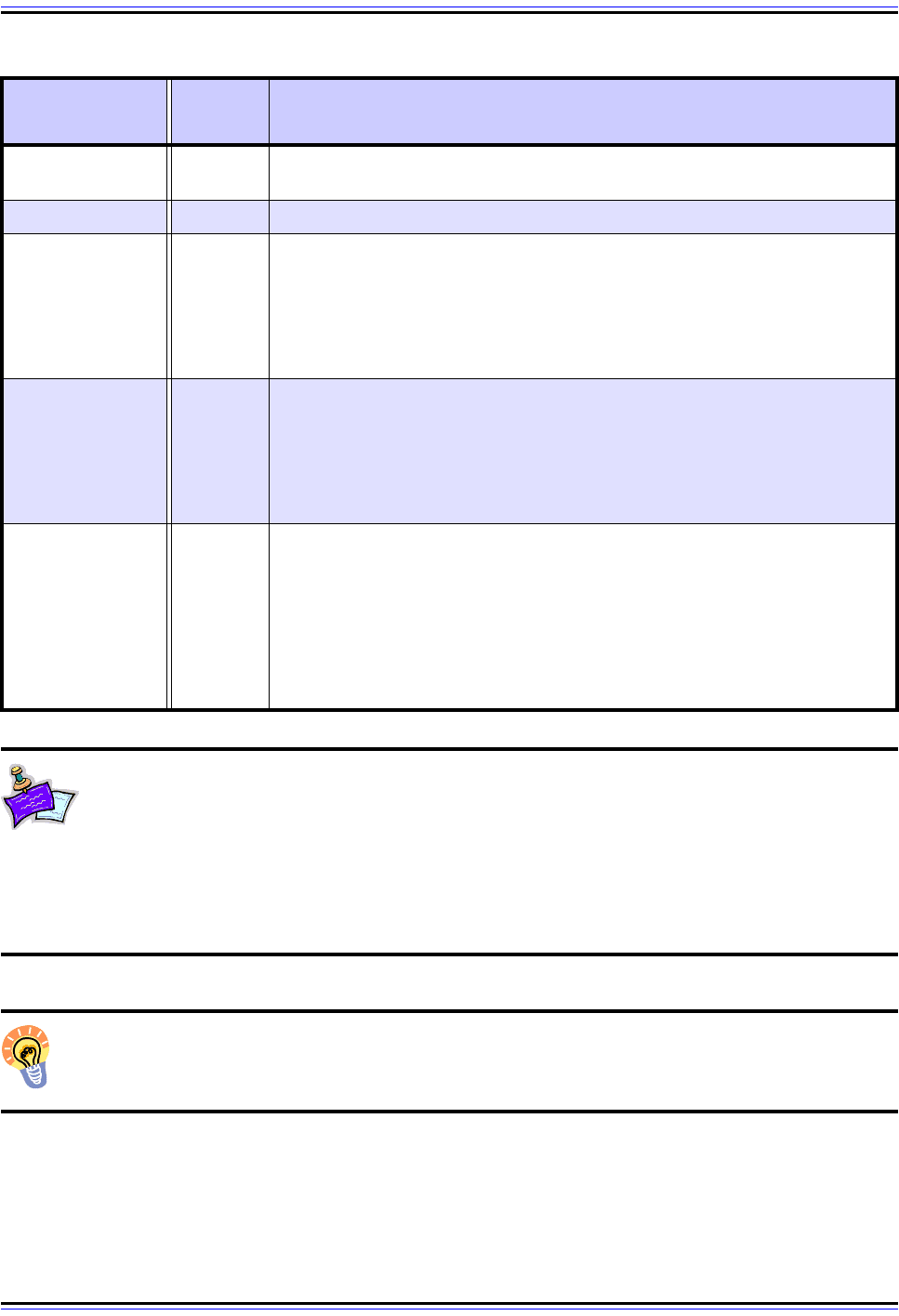
The TCP/IP Guide - Version 3.0 (Contents) ` 672 _ © 2001-2005 Charles M. Kozierok. All Rights Reserved.
Note: As an aside, the Redirect message has always been somewhat of an
oddball. In ICMPv4, it is considered an error message, but this makes it different
from other error messages. For one thing, it's not really an error, since it doesn't
represent a failure to deliver, only an inefficiency in doing so. For this reason, in ICMPv6 it
was “moved” to the set of informational message types. Here too it doesn't really fit in with
the others, since it is sent in reaction to a regular IP message, and it also includes a copy of
(part of) the datagram that spawned it, like error messages do.
Key Concept: ICMPv6 Redirect messages are used by a router to inform a host of a
better router to use for future datagrams sent to a particular host or network. They
are not used to alter routes between routers, however.
Checksum 2
Checksum: 16-bit checksum field for the ICMP header, as described in the
topic on the ICMP common message format.
Reserved 4 Reserved: 4 bytes sent as zeroes.
Target Address 16
Target Address: The address of the router that the router creating the
Redirect is telling the recipient of the Redirect to use as a first hop for
future transmissions to the destination. Phew. Example time: if router R2
generated a Redirect telling host A that in the future transmissions to host
B should be sent first to router R1, then R1's IPv6 address would be in this
field.
Destination
Address
16
Destination Address: The address of the device whose future transmis-
sions are being redirected; this is the destination of the datagram that
originally led to the Redirect being generated. Repeating the example
above: if router R2 generated a Redirect telling host A that in the future
transmissions to host B should be sent first to router R1, then host B's IPv6
address would be in this field.
Options Variable
Options: Redirect messages normally include two ICMPv6 option fields:
☯ Target Link-Layer Address: The layer-two address of the Target
Address, if known. This saves the recipient of the Redirect message
from needing to perform an address resolution on the target.
☯ Redirected Header: As much of the IPv6 datagram that spawned
this Redirect as will fit without causing the size of the ICMPv6 error
message (including its own IP header) to exceed the minimum IPv6
maximum transmission unit (MTU) of 1280 bytes.
Table 114: ICMPv6 Redirect Message Format (Page 2 of 2)
Field Name
Size
(bytes)
Description
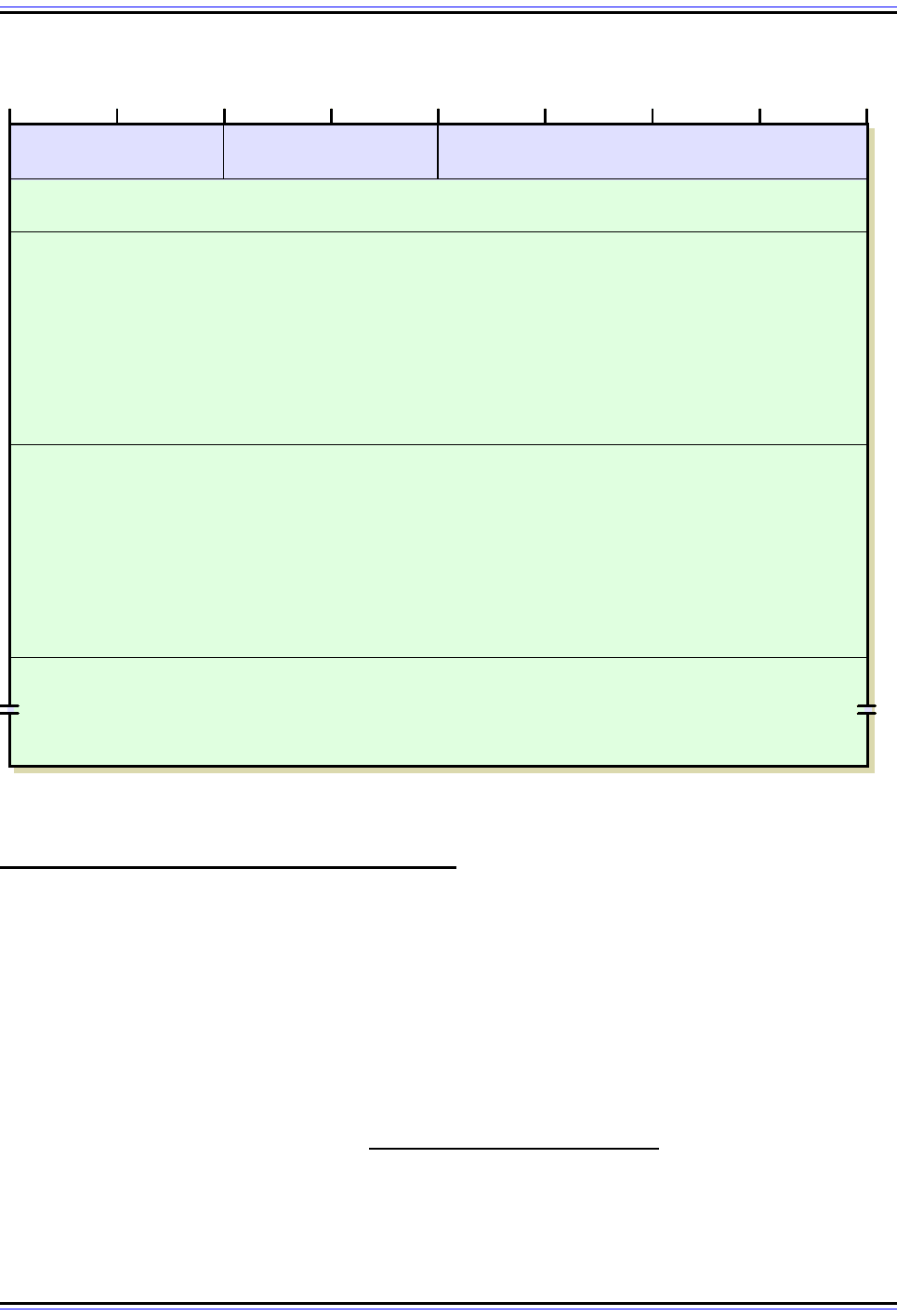
The TCP/IP Guide - Version 3.0 (Contents) ` 673 _ © 2001-2005 Charles M. Kozierok. All Rights Reserved.
ICMPv6 Router Renumbering Messages
One of the more interesting decisions made in IPv6 was the selection of a very large 128-bit
address size. This provides an address space far larger than what humans are ever likely to
need—and probably larger than was needed for IPv6, strictly speaking. What this wealth of
bits provides is the flexibility to assign meaning to different bits in the address structure.
This in turn serves as the basis for important features such as the autoconfiguration and
automated renumbering of IPv6 addresses.
The renumbering feature in IPv6 is of particular interest to network administrators, since it
has the potential to make large network migrations and merges much simpler. In August
2000, the IETF published RFC 2894, Router Renumbering for IPv6
, which describes a
similar technique to allow routers in an autonomous system to be renumbered, by giving
them new prefixes (network identifiers).
Figure 162: ICMPv6 Redirect Message Format
Type = 135 Code = 0 Checksum
Reserved
Target Address
Destination Address
ICMPv6 Options
4 8 12 16 20 24 28 320
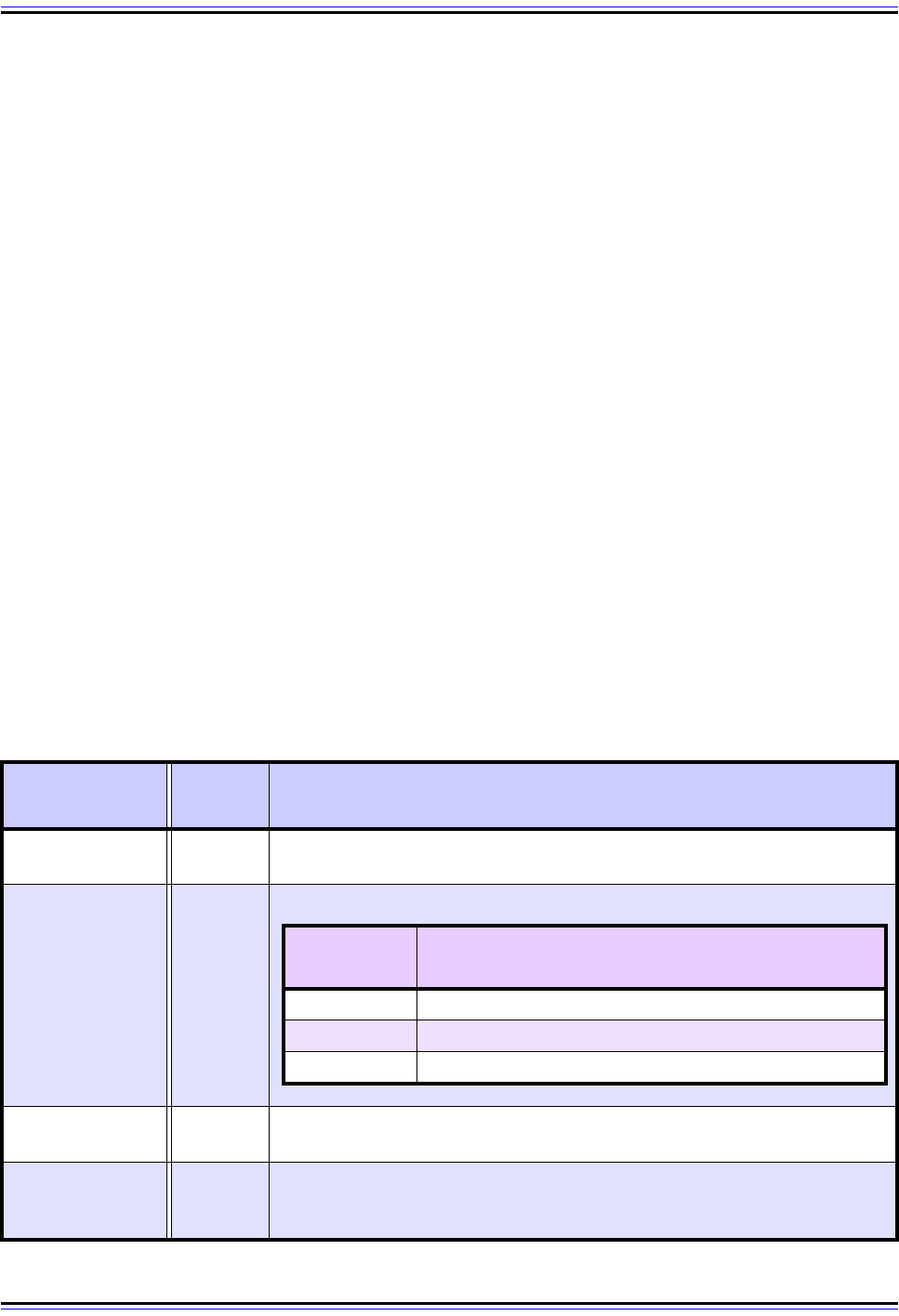
The TCP/IP Guide - Version 3.0 (Contents) ` 674 _ © 2001-2005 Charles M. Kozierok. All Rights Reserved.
Router renumbering is actually a fairly simple process—especially if we avoid the gory
details, which is exactly what I intend to do. A network administrator uses a device on the
internetwork to generate one or more Router Renumbering Command messages. These
messages provide a list of prefixes of routers that are to be renumbered. Each router
processes these messages to see if the addresses on any of their interfaces match the
specified prefixes. If so, they change the matched prefixes to the new ones specified in the
message. Additional information is also included in the Router Renumbering Command as
appropriate to control how and when the renumbering is done.
If the Command message requests it, each router processing the message will respond
with a Router Renumbering Result message. This message serves as feedback to let the
originator of the Command know whether the renumbering was successful, and what
changes, if any, were made.
The router renumbering standard also defines a few important management features. Many
of these reflect the great power of something that can mass-renumber routers—and hence,
the potential for such power to be abused. It is possible to send commands in a “test mode”,
where they are processed but the renumbering not actually executed. Messages include a
sequence number to guard against replay attacks, and a special Sequence Number Reset
message can be used to reset the sequence number information routers have previously
stored. For added security, the standard specifies that messages be authenticated and
identity-checked.
ICMPv6 Router Renumbering Message Format
The format of Router Renumbering messages is in Table 115 and Figure 163.
Table 115: ICMPv6 Router Renumbering Message Format (Page 1 of 3)
Field Name
Size
(bytes)
Description
Type 1
Type: Identifies the ICMPv6 message type; for Router Renumbering
messages the value is 138.
Code 1
Checksum 2
Checksum: 16-bit checksum field for the ICMP header, as described in the
topic on the ICMP common message format.
Sequence
Number
4
Sequence Number: A 32-bit sequence number used to guard against
“replay” attacks by allowing a recipient to detect stale, duplicate or “out of
order” commands.
Code: Indicates the subtype of Router Renumbering message:
Value
(Decimal)
Message Subtype
0 Router Renumbering Command
1 Router Renumbering Result
255 Sequence Number Reset
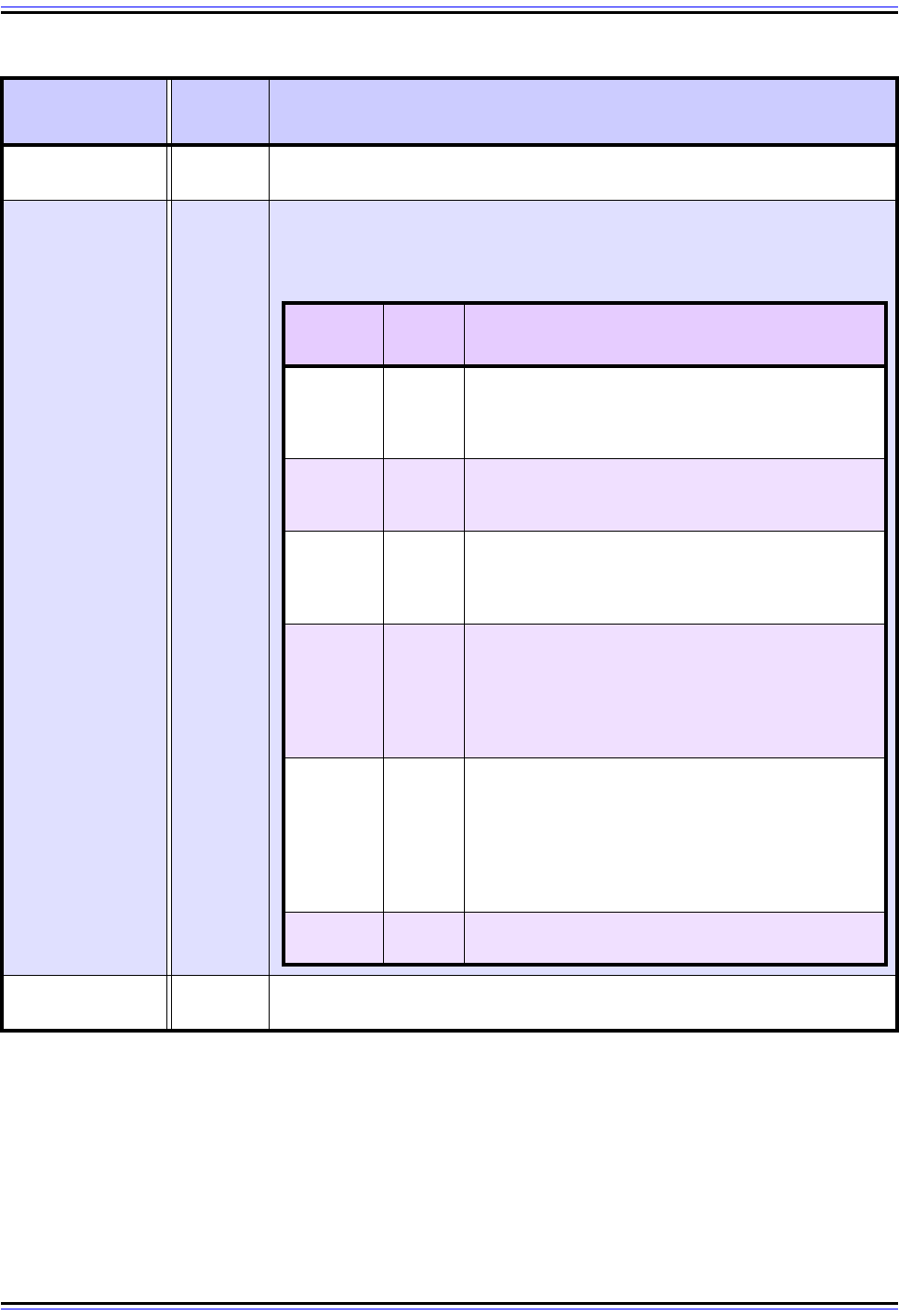
The TCP/IP Guide - Version 3.0 (Contents) ` 675 _ © 2001-2005 Charles M. Kozierok. All Rights Reserved.
Segment
Number
1
Segment Number: Differentiates between valid Router Renumbering
messages within the same Sequence Number.
Flags 1
Max Delay 2
Maximum Delay: Tells a router receiving a message the maximum amount
of time (in milliseconds) it is allowed to delay before sending a reply.
Table 115: ICMPv6 Router Renumbering Message Format (Page 2 of 3)
Field Name
Size
(bytes)
Description
Fl
ags:
Fi
ve
fl
ags use
d
t
o con
t
ro
l
th
e renum
b
er
i
ng process.
Th
e
fi
rs
t
f
our
fl
ags
(T
,
R
,
A
and S) control the operation of Command messages and in a Result message are
j
ust copied verbatim from the Command that led to the Result being created. The P
flag is only used in Result messages (0 in Command messages):
Subfield
Name
Size
(bytes)
Description
T
1/8
(1 bit)
Test Command Flag: When set to 1, flags this
Command as being a test message. This tells the
recipient to only “simulate” processing of the renumber
and not actually do it.
R
1/8
(1 bit)
Result Requested Flag: When set to 1, requests that
a Result message be sent after processing the
Command, when 0, says not to send one.
A
1/8
(1 bit)
All Interfaces Flag: When this flag is clear (0), the
Command is not applied to any router interfaces that
have been administratively shut down. When 1, it is
applied to all interfaces.
S
1/8
(1 bit)
Site-Specific Flag: This flag has meaning only when a
router treats its interfaces as belonging to different
sites. If so, a value of 1 tells it to apply the Command
only to interfaces on the same site as the interface for
which the Command was received. A value of 0 applies
it to all interfaces regardless of site.
P
1/8
(1 bit)
Processed Previously Flag: This flag is normally 0,
meaning the Command was not previously seen and
the Result message contains the report of processing
it. When 1, indicates that the recipient of the Command
believes it has seen it before and is not processing it.
(Test commands are not included in the assessment of
whether a Command has been seen before.)
Reserved
3/8
(3 bits)
Reserved: Three bits reserved for future flags.
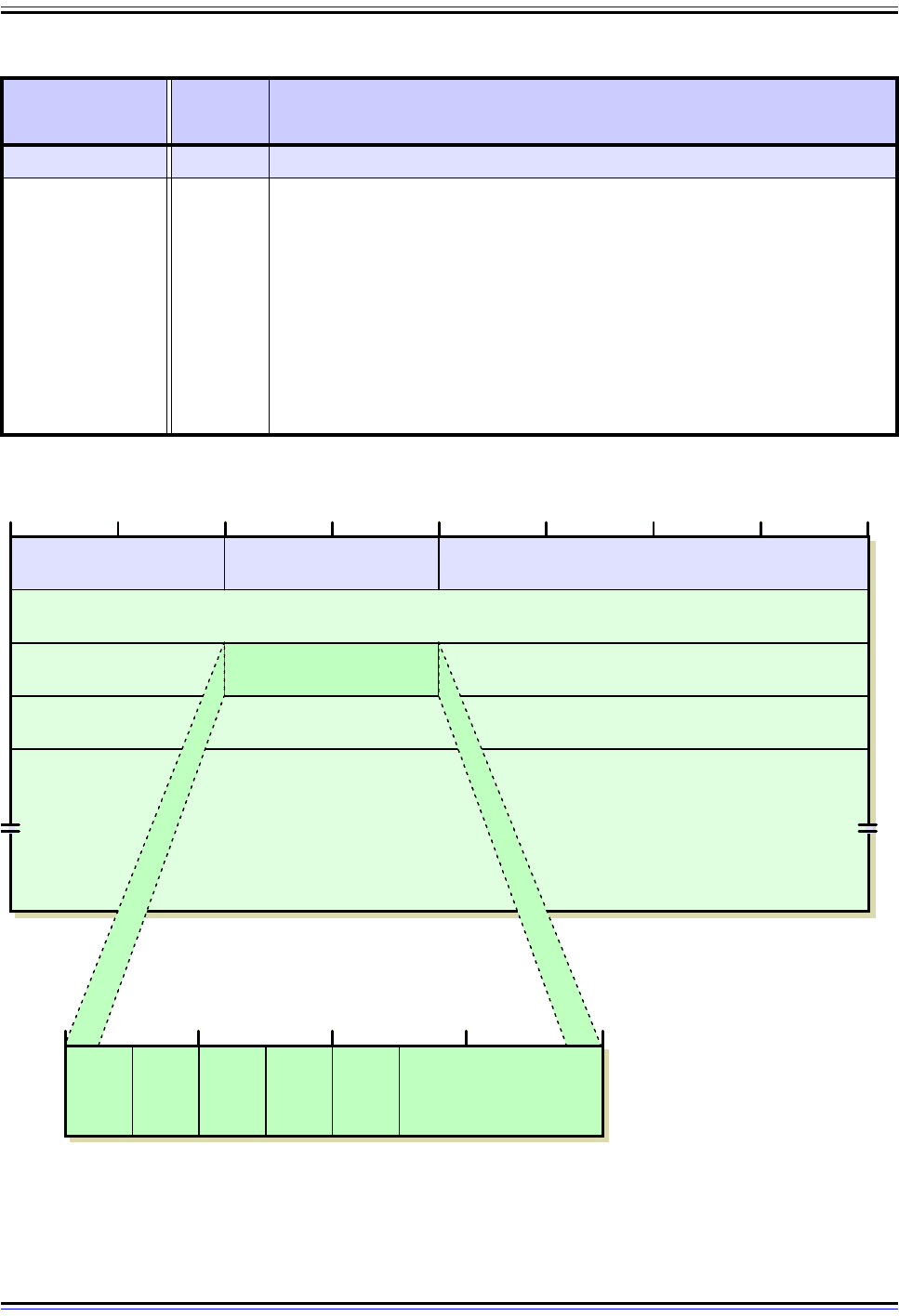
The TCP/IP Guide - Version 3.0 (Contents) ` 676 _ © 2001-2005 Charles M. Kozierok. All Rights Reserved.
Reserved 4 Reserved: 4 reserved bytes.
Message Body Variable
Message Body: For a Router Renumbering Command, the message body
contains two sets of information. The first is a Match-Prefix Part for the
prefix being renumbered. The second is one or more Use-Prefix Parts that
describe the new prefix for each match. A router receiving a Command
checks its own interface addresses and if they match the Match-Prefix-
Part, they use Use-Prefix Parts data to accomplish the renumbering.
For a Router Renumbering Result, the message body contains zero or
more Match Results entries that describe each prefix that a router matched
from a Router Renumbering Command. Each entry provides information
regarding whether renumbering was successful or not for a prefix.
Figure 163: ICMPv6 Router Renumbering Message Format
Table 115: ICMPv6 Router Renumbering Message Format (Page 3 of 3)
Field Name
Size
(bytes)
Description
Type = 138 Code Checksum
Sequence Number
Segment Number Flags Maximum Delay
4 8 12 16 20 24 28 320
240
Tes t
Com-
mand
Flag (T)
Res ult
Request-
ed Flag
(R)
All Inter-
faces
Flag
(A)
Site-
Specif ic
Flag
(S)
Proces-
sed Pre-
viously
Flag (P)
Reserved
86
Message Body
Reserved
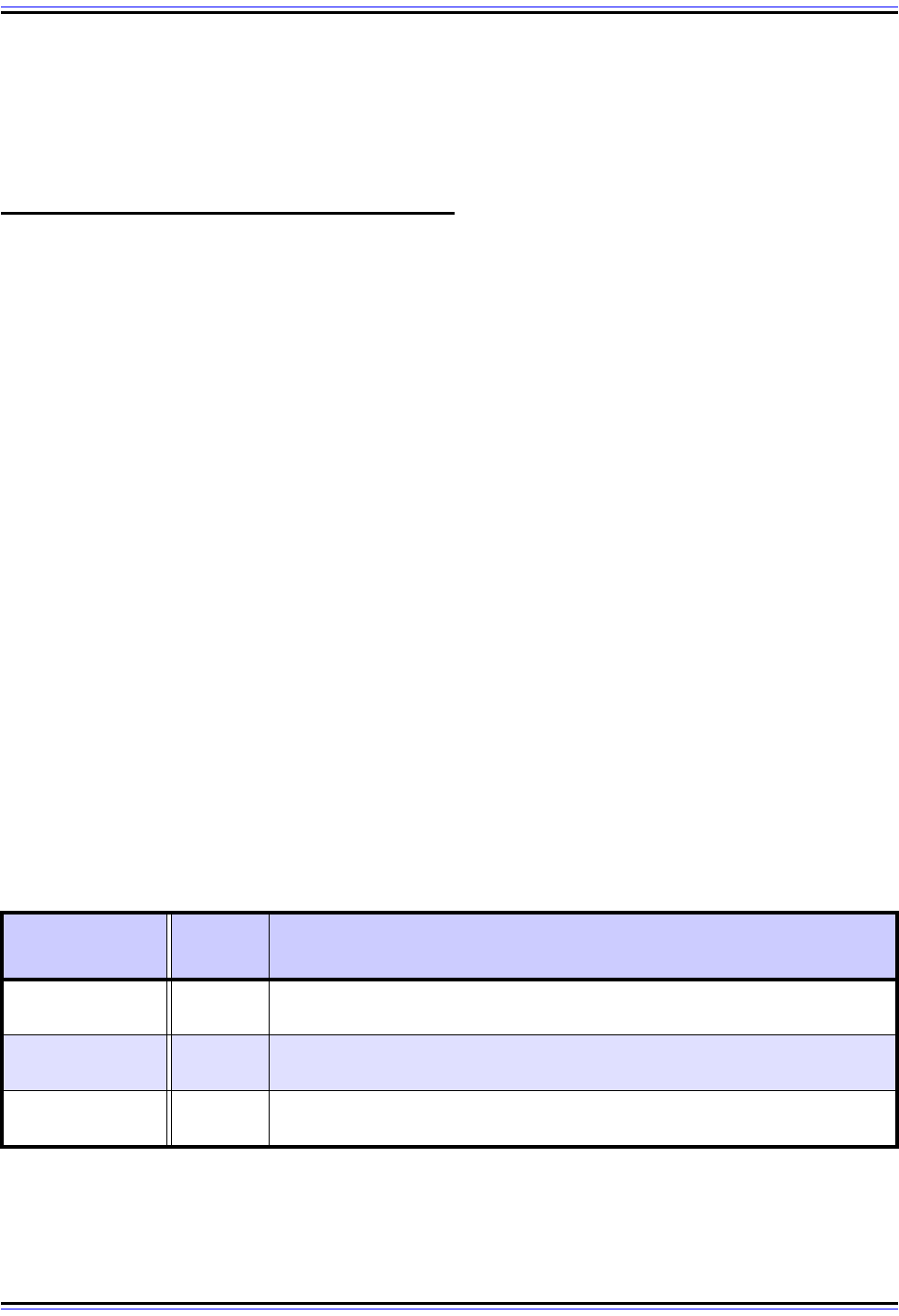
The TCP/IP Guide - Version 3.0 (Contents) ` 677 _ © 2001-2005 Charles M. Kozierok. All Rights Reserved.
Addressing of Router Renumbering Messages
Since these messages are intended for all routers on a site, they are normally sent to the
“all routers” multicast address, using either link-local or site-local scope. They may also be
sent to local unicast addresses.
ICMPv6 Informational Message Options
Each of the five ICMPv6 informational messages types defined and used by the Neighbor
Discovery (ND) protocol has an Options field into which one or more options may be
inserted. This probably isn't the best name for these sets of data, since they are only
optional in certain cases. In fact, in some cases the “option” is actually the entire point of the
message. For example, a Neighbor Advertisement message containing a link-layer address
for address resolution carries it in an “option”, but the message wouldn't be of much use
without it.
Each option has its own structure of subfields based on the classical “type, length and
value” triplet used in many message formats. The Type subfield indicates the option type
and the Length field indicates its length so the device processing the option can determine
where it ends. The “value” is not a single field, but rather one or more that contain the actual
information for which the option is being used.
Some options are used for only one kind of ICMPv6 message, while others are used for
more than one variety. So, they are best thought of as “modular components” used in
different types of messages as needed. I describe the format of each of these five options
below.
Source Link-Layer Address Option Format
This option carries the link-layer address of a device sending an ICMPv6 message, as
shown in Table 116 and Figure 164. Used in Router Advertisement, Router Solicitation and
Neighbor Solicitation messages:
Table 116: ICMPv6 Source Link-Layer Address Option Format
Field Name
Size
(bytes)
Description
Type 1
Type: Identifies the ICMPv6 option type. For the Source Link-Layer
Address option, the value is 1.
Length 1
Length: The length of the entire option (including the Type and Length
fields), expressed in units of 8 octets (64 bits).
Source Link-
Layer Address
Variable
Source Link-Layer Address: The link-layer (layer two) address of the
device sending the ICMPv6 message.
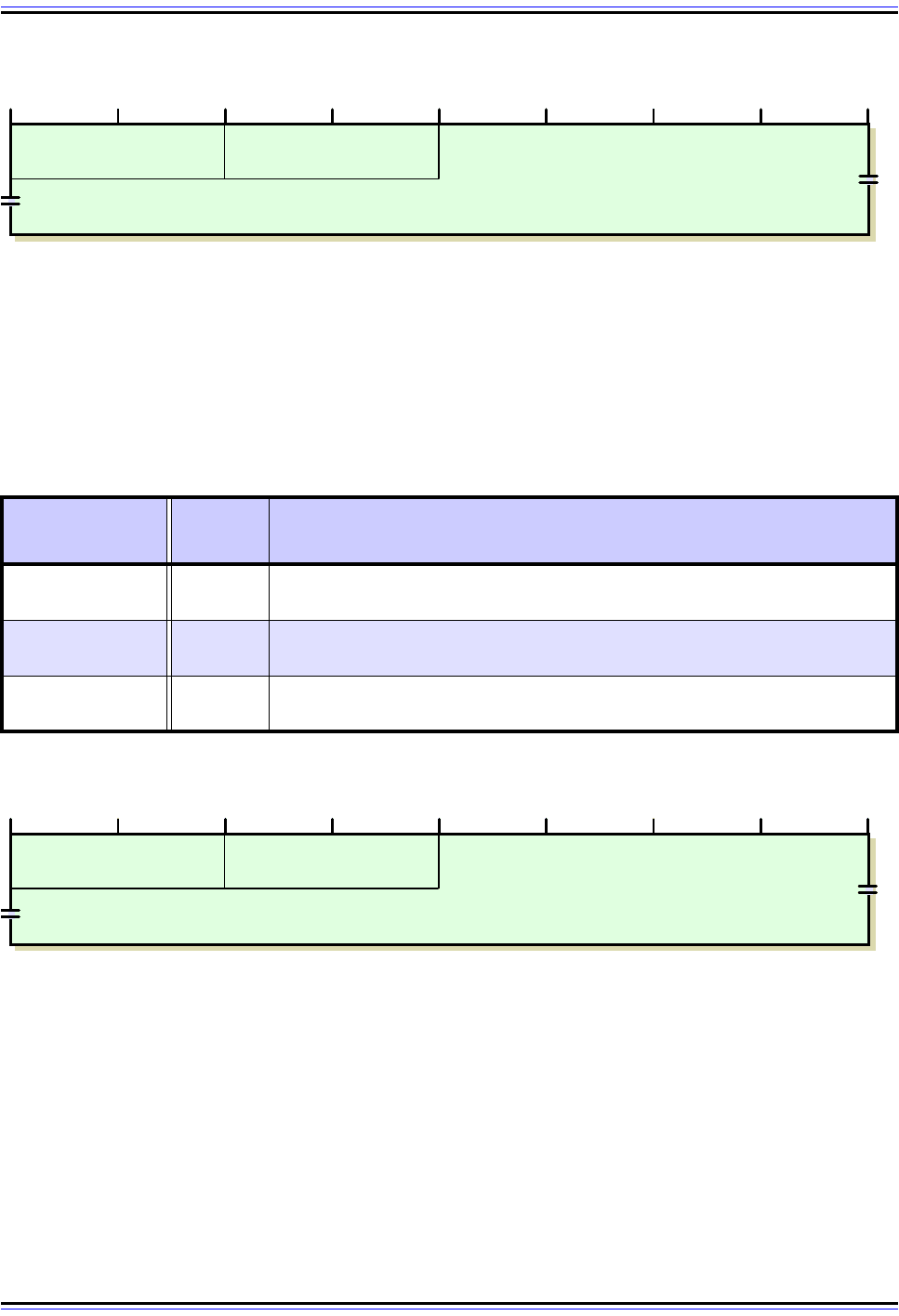
The TCP/IP Guide - Version 3.0 (Contents) ` 678 _ © 2001-2005 Charles M. Kozierok. All Rights Reserved.
Target Link-Layer Address Option Format
The counterpart of Source Link-Layer Address, this option carries the link-layer address
corresponding to the Target Address field in Neighbor Advertisement and Redirect
messages; see Table 117 and Figure 165.
Figure 164: ICMPv6 Source Link-Layer Address Option Format
Table 117: ICMPv6 Target Link-Layer Address Option Format
Field Name
Size
(bytes)
Description
Type 1
Type: Identifies the ICMPv6 option type. For the Target Link-Layer
Address option, the value is 2.
Length 1
Length: The length of the entire option (including the Type and Length
fields), expressed in units of 8 octets (64 bits).
Target Link-
Layer Address
Variable
Target Link-Layer Address: The link-layer (layer two) address of the
target device.
Figure 165: ICMPv6 Target Link-Layer Address Option Format
Type = 1 Length
4 8 12 16 20 24 28 320
Source Link-Layer
Address
Type = 2 Length
4 8 12 16 20 24 28 320
Target Link-Layer
Address
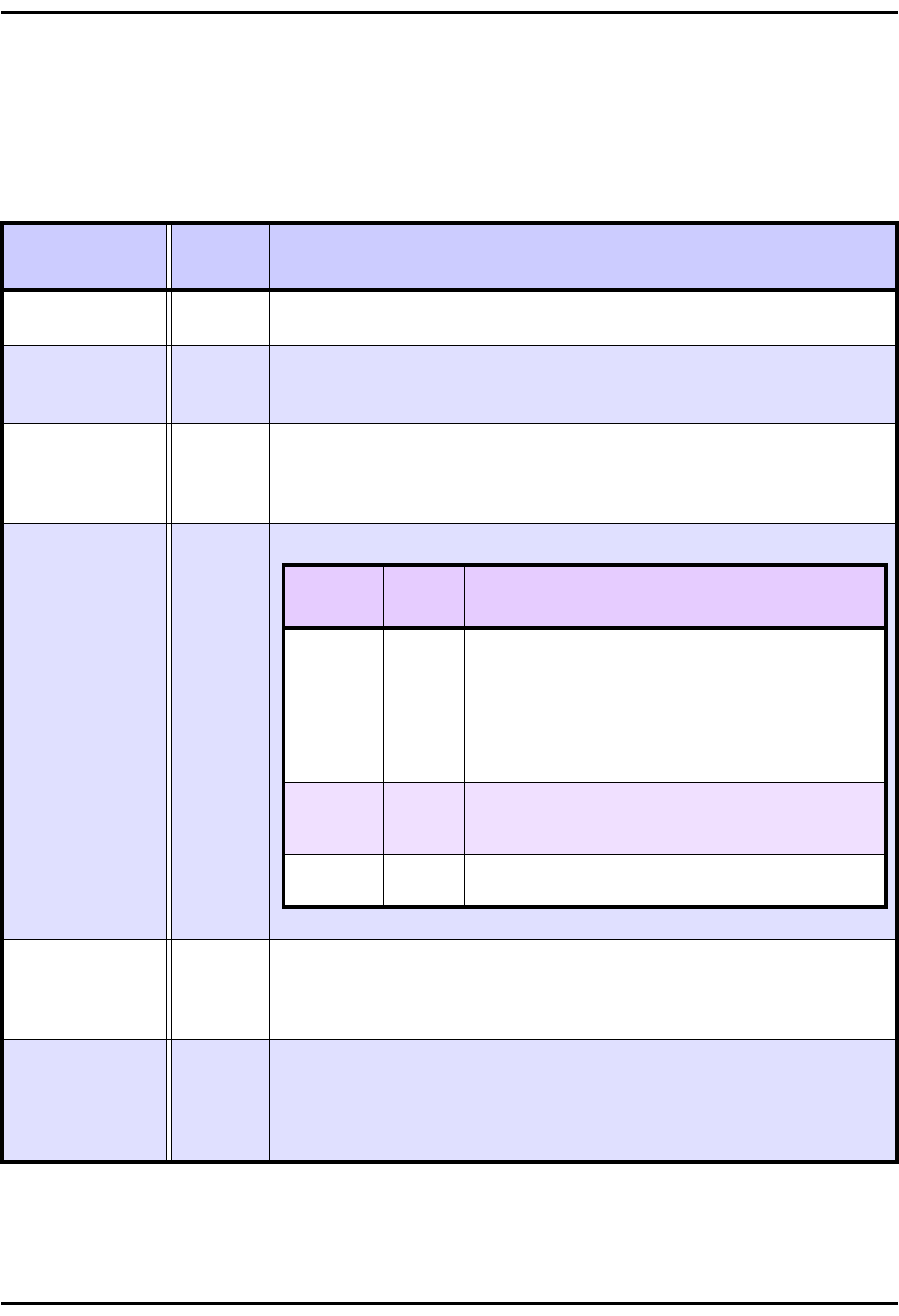
The TCP/IP Guide - Version 3.0 (Contents) ` 679 _ © 2001-2005 Charles M. Kozierok. All Rights Reserved.
Prefix Information Option Format
This option provides a prefix and related information in Router Advertisement messages.
This is the longest and most complex of the options, as you can see in Table 118 and Figure
166.
Table 118: ICMPv6 Prefix Information Option Format (Page 1 of 2)
Field Name
Size
(bytes)
Description
Type 1
Type: Identifies the ICMPv6 option type. For the Prefix Information option,
the value is 3.
Length 1
Length: The length of the entire option (including the Type and Length
fields), expressed in units of 8 octets (64 bits). The Prefix Information
option is fixed in size at 32 bytes, so the value of the Length field is 4.
Prefix Length 1
Prefix Length: The number of bits in the Prefix field (below) that are
considered part of the network identifier (the remainder are used for the
host identifier and ignored). See this overview discussion of IPv6 address
notation for details on prefix lengths.
Flags 1
Valid Lifetime 4
Valid Lifetime: The amount of time, in seconds, that the recipient of the
message containing this option should consider the prefix valid for
purposes of on-link determination (see description of the “L” flag just
above). A value of all 1s means “infinity” (“forever”).
Preferred
Lifetime
4
Preferred Lifetime: When the recipient of this prefix uses it to automati-
cally generate addresses using address autoconfiguration, specifies the
amount of time, in seconds, that such addresses remain “preferred”
(meaning, valid and freely usable). A value of all 1s means “infinity”
(“forever”).
Flags: A pair of flags that convey information about the prefix:
Subfield
Name
Size
(bytes)
Description
L
1/8
(1 bit)
On-Link Flag: When set to 1, tells the recipient of the
option that this prefix can be used for on-link determi-
nation. This means the prefix can be used for deciding
whether or not an address is “on-link” (on the
recipient's local network). When 0, the sender is
making no statement regarding whether the prefix can
be used for this or not.
A
1/8
(1 bit)
Autonomous Address-Configuration Flag: When
set to 1, specifies that this prefix can be used for IPv6
address autoconfiguration.
Reserved
6/8
(6 bits)
Reserved: 6 “leftover” bits reserved and sent as
zeroes.
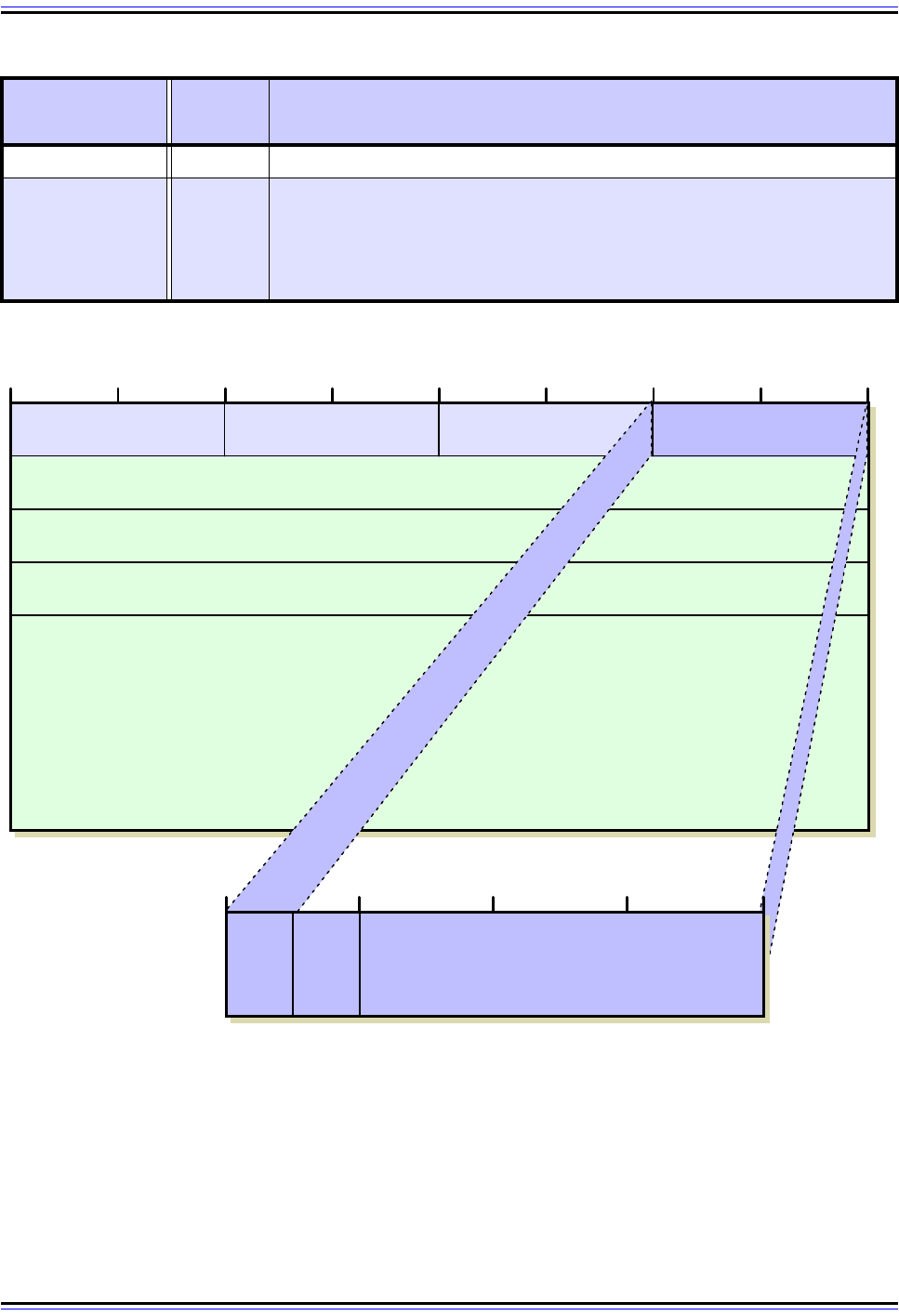
The TCP/IP Guide - Version 3.0 (Contents) ` 680 _ © 2001-2005 Charles M. Kozierok. All Rights Reserved.
Reserved 4 Reserved: 4 unused bytes sent as zeroes.
Prefix 16
Prefix: The prefix being communicated from the router to the host in the
Router Advertisement message. The Prefix Length field indicates how
many of the 128 bits in this field are significant (part of the network ID).
Only these bits are placed in the Prefix field, the remaining bits are cleared
to zero.
Figure 166: ICMPv6 Prefix Information Option Format
Table 118: ICMPv6 Prefix Information Option Format (Page 2 of 2)
Field Name
Size
(bytes)
Description
Type = 3 Length Prefix Length Flags
Valid Lifetime
Preferred Lifetime
4 8 12 16 20 24 28 320
240
On-Link
Flag
(L)
Auto-
nomous
Address
Config
Flag (A)
Reserved
86
Prefix
Reserved
